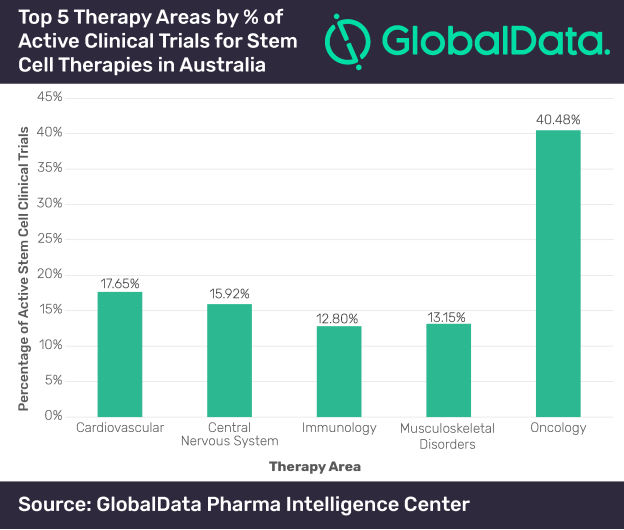
Photo credit: Global data
The recently published final roadmap for Stem Cell Therapies Mission (SCTM), grant opportunities and stem cell research regulations will further streamline an already agile stem cell research sector and boost Australia’s position in the Asia-Pacific stem cell research landscape, says GlobalData, a leading data and analytics company.
GlobalData’s report, ‘CountryFocus: Healthcare, Regulatory and Reimbursement Landscape – Australia’, reveals that the pharmaceutical market in Australia is expected to grow at a compound annual growth rate (CAGR) of 3.3% to reach US$13.33bn in 2022.
As part of the 2019/20 Budget, the Government allotted A$150m to support stem cell research and deliver innovative, safe and effective treatments over the next 10 years.
Moreover, Australia’s Therapeutic Goods Administration (TGA) enforced new stem cell treatment regulations on 1 July 2019 to protect patients from unproven and harmful stem cell treatments.
Sasmitha Sahu, Pharma Analyst at GlobalData, comments: “Australia has been very competitive in regenerative medicine research, including stem cell therapies with the establishment of the Australian Regenerative Medicine Institute (ARMI) and the Stem Cells Australia initiative. The same enthusiasm is reflected in funding and regulation as well.”
Australia published the SCTM Roadmap to ‘assist in the implementation of the Mission, including setting key priorities for funding’ and ‘support Australian researchers to make game-changing discoveries’. The 2019/20 SCTM implementation snapshot showed that A$6m was earmarked for 2019/20 while A$18m was earmarked every year until 2022/23. The 2019-2020 stem cell therapies grant opportunity is now open and will close on 4 March 2020.
Ms. Sahu adds: “This could mean a head start for Australia with new discoveries and the development of new treatments and will foster the development of regulated and safe stem cell therapies.”
Currently, the only established stem cell treatment approved in Australia is haematopoietic stem cell (HPSC) transplantation for the treatment of disorders of the blood and immune system such as leukaemia.
GlobalData’s research reveals that oncological indications dominate the stem cell pipeline landscape in Australia with nearly 40% of experimental stem cell therapies in active trials, followed by cardiovascular and central nervous system indications at 17.65% and 15.92%, respectively.
Ms. Sahu continues: “With growing interest around stem cell therapies, there was a greater need for regulating the research to facilitate faster approvals and market availability of therapies for indications with greater unmet need. In the absence of well-defined guidance, patients are more vulnerable to many unregulated and unapproved stem cells therapies available.”
GlobalData’s research reveals that China is leading in Asia-Pacific with 51.54% of active stem cell clinical trials while Australia is fourth in the list with only 5.70%.
Ms. Sahu concludes: “This is set to change as Australia continues to build up and prioritize therapy areas for research in terms of funding.




